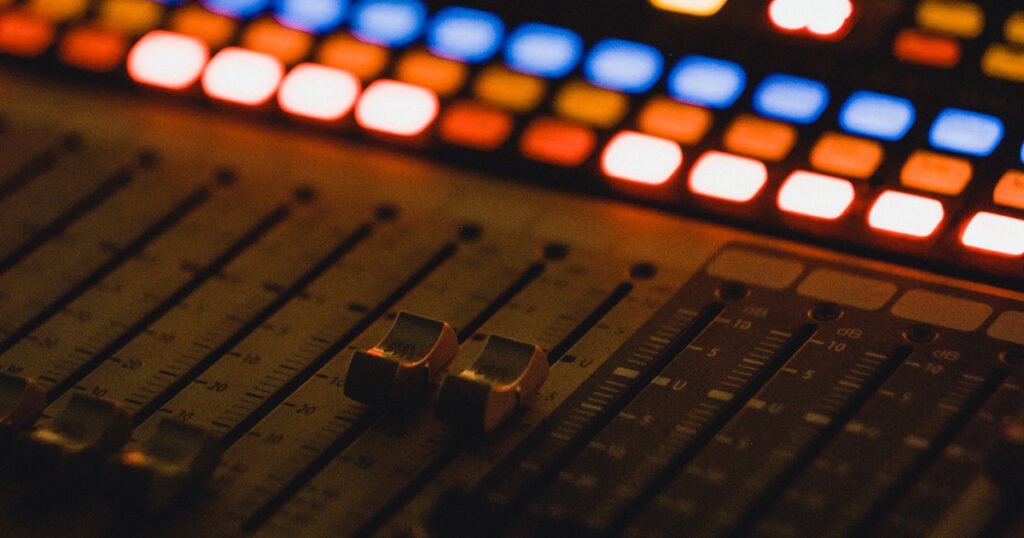Mastering Audio in Post-Production


Alright, fellow post-production enthusiasts, let’s dive right into the heart of the matter: Audio Enhancement in Post-Production. It’s an essential topic, especially for those of us who live and breathe post-production. Whether you’re tweaking a podcast or fine-tuning a film’s soundtrack, mastering audio in post-production is a game changer. It’s not just about making sounds louder or softer; it’s an art form that breathes life into your project, making every dialogue, background score, and sound effect hit the right note.
The Role of Sound Mixing in Audio Post-Production: Getting to grips with the basics.
Hey folks, let’s kick things off with sound mixing – the backbone of audio post-production. Sound mixing is like the chef’s secret ingredient; it can make or break your project. It’s about balancing dialogue, music, and sound effects to create that perfect auditory experience. For beginners, this is where you start. Get familiar with your Digital Audio Workstation (DAW), and understand how to use faders and EQ to balance your tracks.
Next up, let’s talk about ambient sounds. These background noises are crucial for setting the scene. You know, the bustling city sounds or the serene chirping in a forest scene. A good mix ensures these sounds complement, not overpower, the main audio. It’s all about creating an immersive experience without distracting your audience.
Lastly, remember, mixing is an iterative process. It’s rare to nail it on the first go. So, patience is key. Adjust, listen, and adjust again. It’s a loop that eventually leads to audio perfection. And hey, always keep those ears open for feedback, whether from colleagues or your audience. It’s a learning curve, but man, is it rewarding!
Advanced Techniques in Sound Design: Elevating your project to the next level.
Moving onto sound design, this is where creativity really kicks in. Sound design is not just about recording sounds; it’s about crafting an auditory landscape that enhances your narrative. Think of it like painting, but with sounds. You’re not just capturing audio; you’re creating an aural tapestry that tells a story.
For the tech-savvy among us, let’s talk about using synthesizers and samplers. These tools can be your best friends in creating unique sounds. Ever thought about how sci-fi movies make those futuristic noises? That’s sound design at its finest. It’s about thinking outside the box and experimenting with different textures and layers of sound.
Lastly, don’t forget the power of silence. In sound design, what you don’t hear is just as important as what you do. Strategic silences can create tension, surprise, or even relief. It’s a powerful tool, so use it wisely. Remember, in sound design, every detail counts, and the devil, as they say, is in the details.
Tips and Tricks for Efficient Audio Enhancement: Making the most out of your tools and time.
Alright, let’s talk efficiency in audio post-production. Time is money, and in our line of work, efficiency is key. First off, organization is crucial. Label your tracks, organize your files, and keep your workspace tidy. It might seem trivial, but it saves tons of time in the long run.
Next, let’s chat about plug-ins and presets. There’s a plethora of them out there, and they can be huge time-savers. But here’s the deal – don’t rely on them blindly. Use them as a starting point, and then tweak to fit your project’s unique needs. It’s like having a base recipe and then adding your own spices to taste.
Lastly, shortcuts and macros. These are lifesavers! Spend some time setting up keyboard shortcuts for repetitive tasks. It might take a bit of time upfront, but it’ll speed up your workflow like nothing else. Trust me, your future self will thank you.
Exploring the Future of Audio Post-Production: What’s next in the world of sound?
As we look ahead, the future of audio post-production is as exciting as it is unpredictable. We’re seeing rapid advancements in AI and machine learning, and these technologies are starting to make their way into our field. Imagine AI-assisted mixing, where a program can make intelligent suggestions based on your editing style.
Then there’s immersive audio. With the rise of VR and AR, spatial audio is becoming more important. It’s about creating a 360-degree sound experience, where the audio moves with the listener. It’s a whole new ballgame and one that’s set to revolutionize how we experience sound.
Lastly, let’s not forget the ongoing importance of networking and community. Platforms where post-production professionals can showcase their work and connect are becoming increasingly vital. It’s not just about the tech; it’s about the people behind it. So, keep connecting, keep sharing, and let’s push the boundaries of what’s possible in audio post-production together!
As we wrap up this chat on mastering audio in post-production, remember, it’s a journey filled with constant learning and experimenting. Whether you’re balancing tracks in sound mixing, creating auditory landscapes in sound design, streamlining your workflow, or exploring new frontiers, it’s all about the passion for sound. Keep pushing the boundaries, keep learning, and most importantly, keep enjoying the process. It’s what makes us thrive in this dynamic world of post-production audio.
Hey, before you go, if you’re just starting out or looking to brush up on the essentials of audio post-production, there’s this other discussion you might find interesting. It’s all about getting a solid grip on the basics of audio post-production, understanding the foundational elements, and building your skills from the ground up. It’s a great starting point for anyone looking to make waves in the world of sound.

Responses